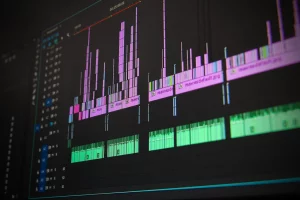How to Clean Up a Computer Filled with Malware


How to Clean Up a Computer Filled with Malware


Introduction
Dealing with a computer infected with malware can be a frustrating and daunting experience. Malware, short for malicious software, is a broad term encompassing various harmful programs designed to disrupt computer operation, steal sensitive information, or cause damage. These include viruses, worms, Trojans, ransomware, adware, spyware, and more. Malware can enter your computer through infected email attachments, malicious websites, software downloads, or even removable storage devices. When your computer is infected, it may exhibit signs of unusual behavior, slow performance, or frequent crashes. However, with the right approach and tools, you can effectively clean up your computer and restore it to its optimal state. In this guide, we will walk you through a comprehensive step-by-step process to remove malware and keep your computer safe from future infections.
1. Identify the Signs of Malware
Signs of Malware Infection:
– Slow computer performance: If your computer suddenly becomes sluggish and takes a long time to perform simple tasks, it could be a sign of malware. Malware can consume system resources and cause delays in processing.
Frequent crashes or freezing: Malware can cause your system to crash or freeze frequently, leading to an unstable computing experience. If you experience frequent blue screens or sudden restarts, malware might be the culprit.
Unexpected pop-up ads: An excessive amount of pop-up ads, especially those that appear even when you are not browsing the web, can indicate adware or potentially unwanted programs (PUPs). These ads can be annoying and disruptive.
Unusual error messages: Malware can generate fake error messages or warnings to trick users into taking certain actions. If you receive alarming messages urging you to call a fake tech support number or download suspicious software, it’s likely malware-related.
Disabled antivirus or firewall: Malware often attempts to disable security software to avoid detection and removal. If you find that your antivirus or firewall is suddenly turned off, it might be due to malware interference.
Changed browser homepage or search engine: If your web browser settings have been altered without your consent, it might be due to browser hijacking caused by malware. Malware can modify your browser settings and redirect you to malicious websites.
2. Disconnect from the Internet
Why Disconnect?
As soon as you suspect a malware infection, disconnect your computer from the internet. This step is crucial to prevent malware from communicating with its command-and-control servers. By disconnecting, you cut off the malware’s ability to receive further instructions or transmit your data, containing the infection and minimizing further damage.
3. Enter Safe Mode
Why Safe Mode?
Boot your computer in Safe Mode before proceeding with the malware removal process. Safe Mode loads only essential drivers and services, excluding unnecessary startup programs and malware, making it easier to detect and remove malicious files without interference. To enter Safe Mode, restart your computer and press the designated key (usually F8 or F12) during boot-up. Select “Safe Mode” from the menu that appears.
4. Run a Full System Scan
Using Antivirus Software
With your computer in Safe Mode, perform a full system scan using reputable antivirus software. Antivirus programs are designed to detect and remove various types of malware, including viruses, Trojans, worms, and more. They often have extensive malware databases and heuristic scanning capabilities that can identify suspicious behavior. Some popular antivirus software options include:
Norton Antivirus: Norton offers comprehensive protection against malware and other online threats, with real-time scanning and frequent updates to keep your computer secure. It also includes features like a firewall, password manager, and secure VPN for added security.
McAfee Antivirus: McAfee provides advanced malware detection and protection, along with features like a firewall and identity theft protection. It offers a user-friendly interface and regular updates to stay ahead of new threats.
Avast Antivirus: Avast is known for its free version, which offers robust malware protection. The paid version includes additional features such as a VPN and password manager for enhanced security and privacy.
Bitdefender Antivirus: Bitdefender is praised for its high malware detection rates and minimal impact on system performance. It offers various layers of protection, including real-time threat monitoring and anti-phishing tools.
Kaspersky Antivirus: Kaspersky is known for its top-notch malware detection capabilities and comprehensive protection against various threats. It also offers features like a firewall and a secure browser to protect your online activities.
Trend Micro Antivirus: Trend Micro offers strong malware protection and a user-friendly interface, suitable for both beginners and experienced users. It also includes a ransomware protection feature to safeguard your files.
ESET NOD32 Antivirus: ESET NOD32 is known for its efficient and fast malware scanning. It uses minimal system resources, making it suitable for older computers or those with limited processing power.
5. Use Anti-Malware Tools
Additional Protection
In addition to your primary antivirus software, consider using specialized anti-malware tools like Malwarebytes to catch and eliminate malware that some traditional antivirus software might miss. Malwarebytes is particularly effective against adware, spyware, and PUPs. It uses a combination of signature-based and behavior-based scanning to detect and remove even the most sophisticated malware threats.
6. Remove Suspicious Programs
Check Installed Programs
After the malware scan, go to the Control Panel and uninstall any suspicious or unfamiliar programs that might be associated with the malware. Pay attention to programs with generic names or publishers you don’t recognize. Malware often disguises itself as legitimate software to avoid detection, so removing any suspicious applications is essential.
7. Clean Browser Extensions
Remove Unwanted Extensions
Malware often infiltrates computers through malicious browser extensions. To clean up your browser, open the settings or extensions page and remove any suspicious or unwanted extensions that could be causing adware or browser hijacking. Go through each installed extension and delete any that you don’t remember installing or that seem suspicious.
8. Update Operating System and Software
Stay Protected
Regularly update your operating system, antivirus, and other software to patch vulnerabilities and stay protected against new malware threats. Cybercriminals frequently exploit security holes in outdated software, so keeping everything up-to-date is crucial. Enable automatic updates whenever possible to ensure you’re always running the latest versions.
9. Clear Temporary Files
Free Up Space
Malware can hide in temporary files and cache, so it’s essential to delete these to free up space and remove potential malware hiding spots. You can use the built-in Disk Cleanup tool on Windows or similar utilities on other operating systems to clean up these files.
10. Reset Browser Settings
Restore Default Settings
Malware often modifies browser settings to redirect users to malicious websites or display unwanted ads. To reverse these changes, reset your web browser to its default settings. This will eliminate any unwanted search engines, homepage modifications, and other browser-related malware issues.
11. Enable Firewall and Real-Time Protection
Stay Proactive
Ensure that your computer’s firewall and real-time protection are enabled to block incoming threats. Firewalls act as a barrier between your computer and the internet, monitoring and controlling incoming and outgoing network traffic. Real-time protection actively scans files and websites for malware as you access them.
12. Create Regular Backups
Protect Your Data
Frequently backup your important files and data to an external drive or cloud storage to safeguard against data loss due to malware attacks. In the event of a malware infection or system crash, having backups ensures you won’t lose critical data. Regular backups give you peace of mind that your data is safe and can be restored in case of emergencies.
13. Educate Yourself
Stay Informed
Knowledge is your best defense against malware. Educate yourself about different types of malware and common infection vectors to avoid falling victim to future attacks. Stay updated on the latest cybersecurity trends and best practices for safe computing. Be cautious when clicking on links or downloading files from unknown sources, and be wary of phishing attempts.
14. Seek Professional Help
When in Doubt
If the malware infection seems severe or persistent, and you’re unsure about how to proceed, seek help from a professional computer technician or IT expert. They have the expertise and tools to deal with complex malware infections effectively. Trying to handle a sophisticated malware infection on your own may result in further damage or data loss.
Conclusion
Cleaning up a computer filled with malware requires patience, diligence, and a proactive approach to cybersecurity. By following the steps outlined in this guide, you can effectively remove malware and improve your computer’s performance and security. Remember to stay proactive with regular software updates, backups, and ongoing education to protect yourself from future threats.








